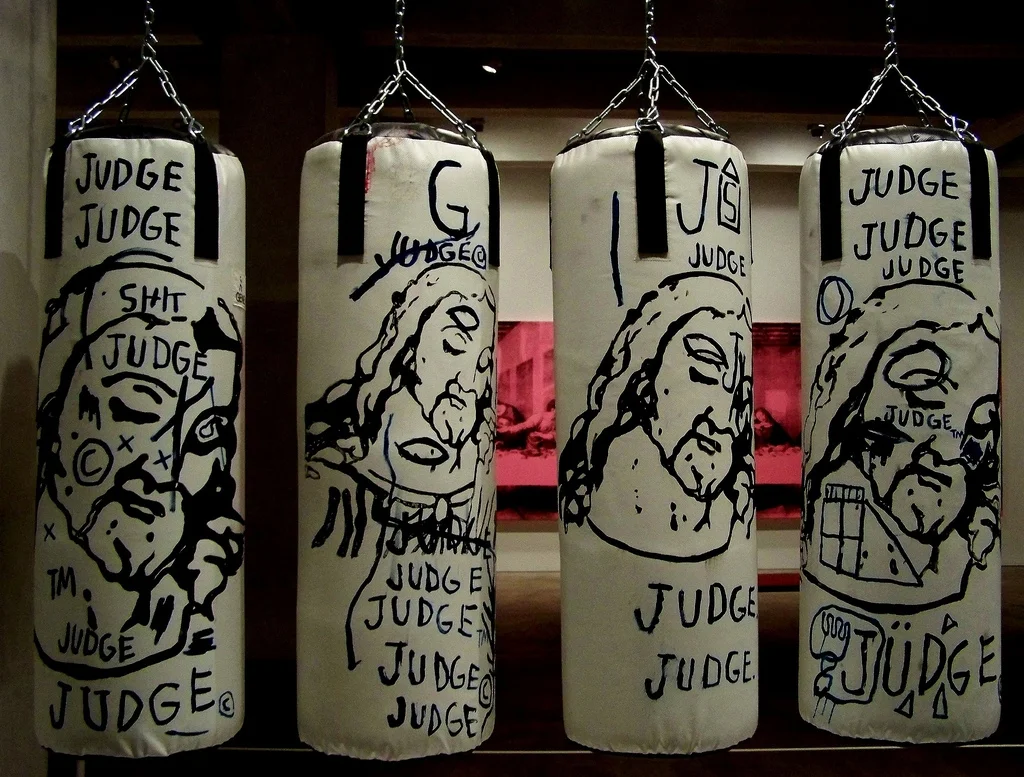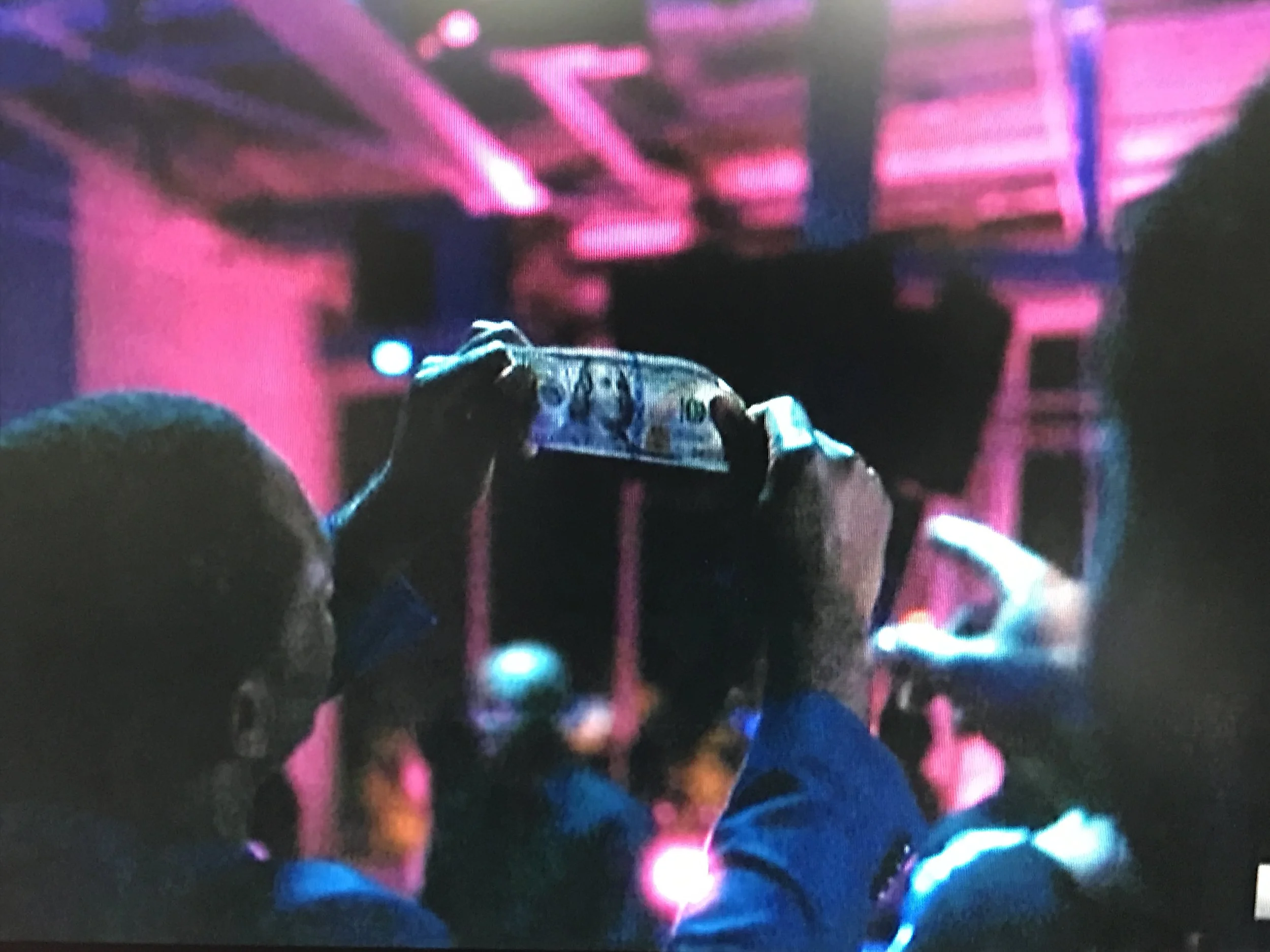Critical Beatdown: Five Savage Songs From Artists Addressing Their Critics
“Eff a rap critic, he talk about it while I live it”-Method Man on “How High” (1995)
Relationships between artists, and those who critique them, are often rocky.
This didn’t begin at the advent of rap, or even recorded, music.
In 1889 Rudyard Kipling famously declared prostitution as ‘the most ancient profession in the world’ about an Indian woman named Lalun in the opening line of his short story, On the City Wall.
What’s less remembered about that line, which has been paraphrased and regurgitated ad nauseum ever since, is that the subject and practitioner that Kipling was referring to was also a singer.
So perhaps in an occasionally problematic Jungle Book author’s mind, the selling of sex and song are somewhat intertwined.
While in discussing another timeworn and less profitable vocation, criticism, a different wall scene comes to mind, from Mel Brooks’ History of the World: Part I.
Many times the creative will let less favorable takes on their art roll off their back.
But on occasion, some inspired work has been inspired by an artist hitting back.
Today’s episode of The Five Spot cites a few favorite examples of the latter.
Don’t Believe the Hype-Public Enemy
Despite being widely considered a “critic’s darling” act, at least retroactively in regards to their early years, Public Enemy was good for at least one song per album attacking misrepresentation in the media.
None more impactfuly than on 1988’s “Don’t Believe the Hype”, off the classic It Takes a Nation of Millions to Hold Us Back album.
Single lines from this record subsequently resurfaced as entire songs from other legendary rap acts such as Ice Cube (“When Will They Shoot?”), Brand Nubian (“Claimin’ I’m a Criminal”) and The Roots (“False Media”) to name a few.
One line from “Hype” was enough to spawn Busta Rhymes’ first group’s name, Leaders of the New School. Chuck D would gain some allies and many more detractors in the press a year later, as a result of the Professor Griff interview, but only “media assassin” Harry Allen manages to avoid the ranks of the “uncool” here.
Crucial Critical Beatdown Couplets:
“Their pens & pads I’ll snatch ‘cause I’ve had it/
I’m not an addict, fiending for static/
I see the tape recorder, and I grab it/
No you can’t have it back, silly rabbit.”
All the Critics Love U In New York-Prince
Full disclosure, as a Prince fan of several decades, I still don’t know exactly what this song is about. I was too young at the time of the classic double-album 1999’s release for the album to be played in our house.
I loved “1999” and “Little Red Corvette” every time they came on TV, but when my 8th Birthday party at the Please Touch Museum in Philadelphia came around, my cousin Jess was gifting me the Thriller album instead.
And trust me, I was cool with that, wearing out Thriller on the family record player like everyone else.
I’m not sure some of the sharper left turns on Prince’s first critical and commercial magnum opus, like this song, would’ve resonated with Young Bambino until after Purple Rain anyway. It was too early to get this weird.
But enough about me, back to P.
He was clearly clowning the early 80’s hype beast on “All the Critics Love U in New York”. But was he also critiquing the new-wave that was then all the rage? Since Prince actually played with and subverted some new-wave-y elements of his own, it’s hard to say.
You can put this song in the same category as “Annie Christian” off Controversy a year before it, or “Bob George” on the shelved Black Album five years later: instances when Prince used a detached or altered spoken-word delivery on the verse, to exorcise a demon but also use jokes for social commentary.
Maybe one day, it’ll all make sense.
Regardless, it stands out today for its undeniable robotic funk groove, with an assist from The Revolution’s keyboardist Matt “Doctor” Fink, plus Prince spazzing with guitar flourishes throughout.
It's safe to say some of the gatekeepers, notably Rolling Stone, which had recently moved from San Francisco where it was birthed to New York, might’ve felt a bit triggered. In their December 1982 review of 1999, while awarding the album four stars (it deserved 4 ½ minimum but probably 5), this song was singled out (along with “D.M.S.R.”) for “qualifying as pure unadulterated filler”.
Crucial Critical Beatdown Couplets:
What ya lookin' at, punk?
Look out all you hippies, you ain't as sharp as me
It ain't about the trippin', but the sexuality, turn it up
The Emperor’s New Clothes-Sinead O’Connor
Public Enemy and Prince both play a role in my earliest memories of Sinead O’Connor.
In true “I remember where I was when…” fashion, I will never forget the first time that I saw a 21-year-old O’Connor, introduced at the '89 Grammys by Billy Crystal, arrive onstage by herself in a combat boots and tank top combo, with the Public Enemy logo painted on the side of her shaved head, while wailing “I don’t know no shame, I feel no pain, I caaaaan’t see the blame”.
The hairs on my arm literally just stood up while typing those lines up.
I’m not sure if it was my budding pre-pubescent spirit of rebellion, our shared Irish-Catholic roots, affinity for Public Enemy, or all of the above being fused into a uniquely beautiful and powerful voice. Whatever the case, I was hooked.
The Prince tie-in with Sinead is more straight-forward. Two years after the shock and awe of her Grammy performance slot, she took a song Prince wrote for The Family in the mid-eighties (“Nothing Compares 2 U”) and made it one of the most enduring ballads from the back end of the 20th century.
The pop super-stardom that arose from that song’s omnipresence became a burden the sensitive and star-crossed O’Connor would immediately try to shake.
It’s fair to say she engaged in forms of self-sabotaging career suicide from there.
Unless you think tearing up a picture of Pope John Paul II on SNL, refusing to allow the national anthem to be played before your Garden State Arts Center show during the Gulf War, publicly disavowing the multiple 1991 Grammy nominations you received while boycotting the ceremony, and following up your first multi-platinum album with a collection of jazz standards (Am I Not Your Girl?) are things someone who cares about being popular would do.
Time has proven Sinead O’Connor correct on both counts when it comes to the political jingoist climate that had Frank Sinatra threatening to kick her ass in Summer 1990, and the shameless cover-up of child molestation that the Roman Catholic church engaged in for decades before and since.
But that's for another day and post.
This is ostensibly about “The Emperor’s New Clothes”.
Sinead was prescient anticipating her issues with press and paparazzi, which had only just begun when she wrote this Hans Christian Anderson-inspired-title song.
So right now, following a Summer 2017 when a longtime fan-turned-Albumism staff writer had an interview marking the 30th Anniversary of The Lion and The Cobra with the Irish legend nixed due to the troubling reports about O’Connor’s current state of mental health, it feels like the time is right to give credit where it’s due. Sinead was kicking up a cloud of dust-filled truth long before #MeToo.
Much Love Sinead, Get Well Soon.
Crucial Critical Beatdown Couplets:
Everyone can see what's going on
They laugh 'cause they know they're untouchable
Not because what I said was wrong
Whatever it may bring
I will live by my own policies
I will sleep with a clear conscience
I will sleep in peace
Leave Me Alone-Michael Jackson
Michael Jackson had reached such Elvis-like heights of tabloid fodder by the mid-80’s that this song’s title feels both reasonably self-explanatory and wildly unrealistic.
Sorry, Mike. You made Thriller. Being left alone after that is not an option.
But damn if we didn’t get this great little funk ditty from the Bad album out of it, while adding another trademark classic MJ video to the canon.
The record’s concept turns an invasive media into a metaphor for a woman he can’t trust, in the vein of the first song that made him a video star, “Bille Jean”.
The live-action coupled with stop-animation fusion of the video, a *nine-month* production process that was considered fairly revolutionary back in ’89, takes the song into a whole new orbit of indignation and humorous self-awareness.
Sadly, watching this video now may make you feel nostalgic for not only a time when Mike was alive and well, but when the headlines about him were more of the National Enquirer variety about chimpanzees and hyperbaric chambers.
Crucial Critical Beatdown Couplets:
I don't care what you talkin' 'bout baby
I don't care what you say
Don't you come walkin' beggin' back mama
I don't care anyway
Dime after dime I gave you all of my money
No excuses to make
Ain't no mountain that I can't climb baby
All is going my way
Johnny Thunders-Critic’s Choice
New York Dolls guitarist-singer-songwriter Johnny Thunders was like NYC's hard-rock/proto-punk version of the Keith Richards archetype.
Neither The Dolls, nor Thunders' next band The Heartbreakers (no, not those Heartbreakers, but Thunders did use the name first), would ever remotely approach the commercial success of The Rolling Stones.
Ironically, post-breakup they would become one of those early seventies bands (like The Stooges, MC5 or Big Star) that your favorite rock critic liked to cite.
Thunders himself might have styled himself after Richards, but he did not share Keef’s indefatigable vessel. He died at literally half the age Richards currently is, back in 1991, as the result of overdose, illness, or homicide depending on who you ask. Meanwhile none of the sources seem any more reliable than Thunders was himself while living.
This song, released posthumously, was recorded when Thunders was past The Heartbreakers and working with a garage-rock outfit called The Chesterfield Kings. If you know anything about them, feel free to share it with the rest of us.
What we can say is that their ramshackle approach here, coupled with Thunders’ indelible lyric on this chorus, makes it a choice cut according to this critic.
Crucial Critical Beatdown Couplets:
“I tell the truth even when I’m lying”
Wudder-Colored Bonus Cut:
The Pretenders-My City Was Gone
Since this Five Spot’s companion piece Painting Masterpieces colored outside the lines with a bonus cut, it’s only fair to do so again here.
This time by paying tribute to the greatest music critic-turned-artist of all-time, Ohio native Chrissie Hynde.
I remember watching this live on HBO at the Rock & Roll Hall of Fame opening concert in our Baltimore house in Fall ’95, days before Jose Mesa blew a save in Game 7 to lose the World Series for Cleveland’s Tribe.
Hynde was in London writing for NME (basically the U.K.’s Rolling Stone) in the mid-seventies, hammering out a reckoning on a Neil Diamond record when she realized she’d be better served making her own music rather than scathing diatribes of music made by others.
She returned to Cleveland in 1976 and got busy. For that decision, the rest of the less musically talented critics, and rock faithful, are grateful.














